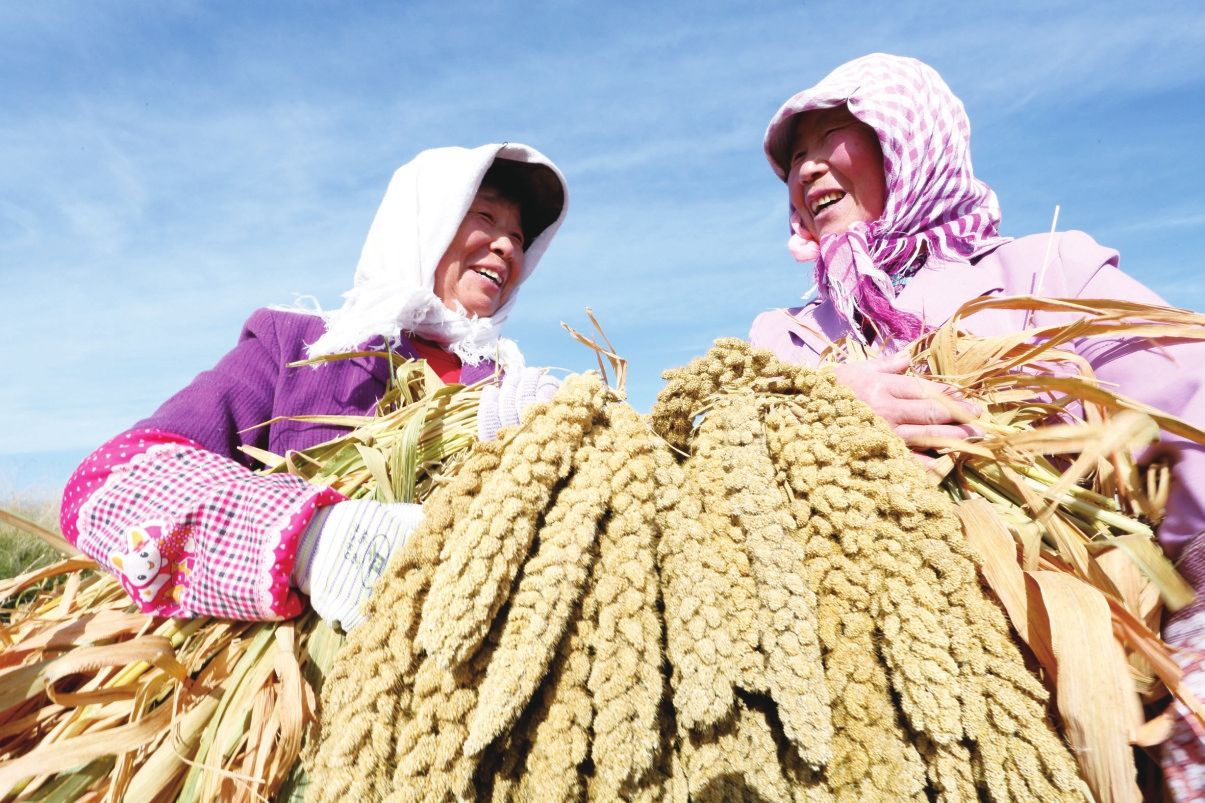Academics hail socialist rural vitalization with Chinese characteristics

Scholars applauded the plan for socialist rural vitalization with Chinese characteristics proposed at the recent central rural work conference, saying it is based on Chinese practices, suited to traditional culture, and adapted to national conditions.
Scholars applauded the plan for socialist rural vitalization with Chinese characteristics proposed at the recent central rural work conference, saying it is based on Chinese practices, suited to traditional culture, and adapted to national conditions.
Held from Dec. 28 to 29, the conference analyzed progress in work related to agriculture, rural areas and farmers, discussed policies for promoting the rural vitalization strategy, and mapped out plans for 2018 and beyond.
According to the conference statement, important progress will be made in rural vitalization by 2020, with an institutional framework and policy system basically taking shape. Agriculture and rural areas will be basically modernized by 2035 as a decisive advancement, and rural areas will realize overall vitalization featuring strong agriculture, beautiful villages and prosperous farmers.
The rural vitalization strategy, which was first put forward at the 19th CPC National Congress, aims to build rural areas with thriving businesses, pleasant living environments, social etiquette and civility, effective governance, and prosperity.
The 11th Five-Year Plan called for the construction of a new socialist countryside, which features advanced production, improved livelihood, a civilized social atmosphere, clean and tidy villages, and democratic administration, noted Zhang Xiaoshan, a research fellow at the Rural Development Institute at the Chinese Academy of Social Sciences (CASS) and a CASS Member, adding that the rural vitalization strategy takes the concept further.
The replacement of advanced production with thriving businesses highlights the importance of industrial development and the integration of the primary, secondary and tertiary sectors, Zhang said. And the substitution of prosperity for improved livelihood signifies even greater improvements in farmers’ quality of life.
While the superseding of democratic administration in favor of effective governance underlines the reform of the governance system and structure and the active participation of farmers, building pleasant living environments, instead of clean and tidy villages, emphasizes the harmony between man and nature, Zhang said.
Rural vitalization should respect the development law of villages to set the stage for rural development. Zhu Qizhen, a professor from the College of Humanities and Development at China Agricultural University, said that it is impracticable to blindly copy the experience of foreign countries or build the countryside in light of urban development ideas.
The systematic socialist rural vitalization with Chinese characteristics is a good fit for China, Zhu said. It crystallizes Chinese President and General Secretary of the CPC Central Committee Xi Jinping’s theory on agriculture, rural areas and farmers and will be a fundamental guidance for future work in this regard, Zhu added.
Rural areas are essential to the construction of a moderately prosperous society in all respects, a beautiful China and a harmonious, stable society, and agriculture is indispensable from the modern economic system, said Zhang Junbiao, a professor from the College of Economics and Management at Huazhong Agricultural University.
The requirement of thriving businesses, pleasant living environments, social etiquette and civility, effective governance, and prosperity are concrete reflections of economic, political, cultural, social and ecological construction, Zhang Junbiao said.
To realize rural vitalization, it is crucial to nurture an intelligent work team that understands agriculture, loves the countryside and knows about farmers while strengthening their capacity to lead farmers, develop agriculture and manage villages. Zhang Junbiao called for a sound promotion mechanism, stronger professional training as well as intensified efforts to cultivate talent for agriculture, rural areas and farmers in higher education.

 PRINT
PRINT CLOSE
CLOSE